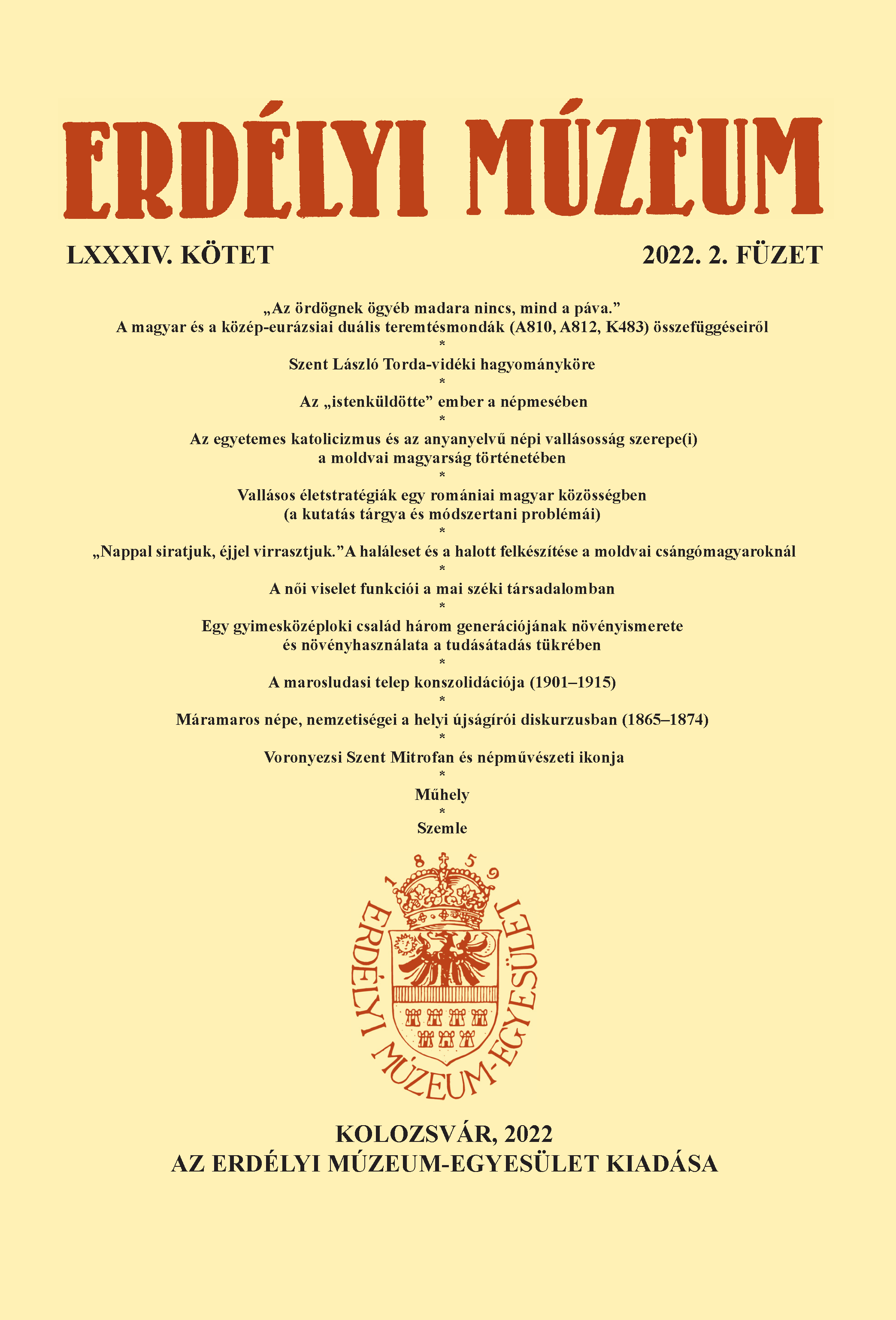Vallásos életstratégiák egy romániai magyar közösségben (a kutatás tárgya és módszertani problémái)
Religious Life Strategies in a Romanian Hungarian Community. The Themes of Research and Methodological Problems
Author(s): Éva PócsSubject(s): Customs / Folklore, Cultural Anthropology / Ethnology, History of Religion
Published by: Erdélyi Múzeum-Egyesület
Keywords: vernacular religion; lived religion; religious life strategies; the normative role of religion; Gyimes Valley;
Summary/Abstract: The topic of the book I am currently writing is the folk, local or vernacular religion of a Hungarian-speaking Roman Catholic community, the function of religion in everyday life, lived religion. The book is based on my altogether 9-months-long field research carried out between 2002 and 2018 at Gyimesközéplok/Lunca de Jos. The main themes of the book are religious life strategies from the point of view of the practitioners of lived religion. The first chapter of the book constitutes a literature review and a discussion of the methodological problems I encountered in the course of field research followed by the description and analysis of religious life strategies. These are: spiritual mediators between this world and the otherworld. Aspiring to being a good Catholic. Aspiring to a good death and salvation, fear of damnation. Worldly interests and desires. Explanations for crisis situations, disasters, fending them off, averting them. The central theme of the analysis: the coming into being of emic categories based on belief, experience (emotions), knowledge and socialization. The closing chapter will summarize the so-called archaic, “medieval” remnants and concludes that we are not dealing with the haphazard survival-like features of certain phenomena, but rather with an older stage of the entirety of lived religion which is characterized by intensive belief, the normative role of religion, the coexistence of sacred and prophane, their inseparability among the majority of community members and accordingly the frequent preference for religious life strategies. Following an analysis of Orthodox influences I summarize the most important factors that have emerged from the analysis for maintaining religious faith: concrete daily needs (dangerous situations, disasters, etc.), familiarity with an axiomatic set of knowledge (“tradition”), religious experiences, socialization into belief and rituals (their transmission to the next generation), clerical influences, sermons, religious readings, repetitive rites, ritual fixity as well as some non-religious factors such as for example heritagization, festive representation.
Journal: Erdélyi Múzeum
- Issue Year: LXXXIV/2022
- Issue No: 2
- Page Range: 79-91
- Page Count: 13
- Language: Hungarian

